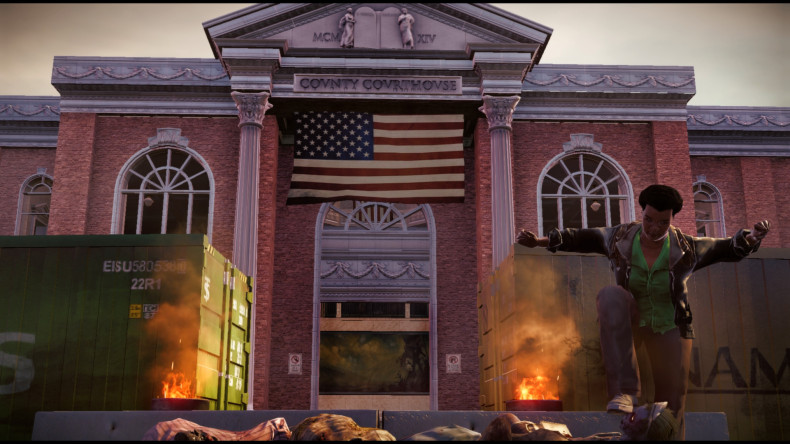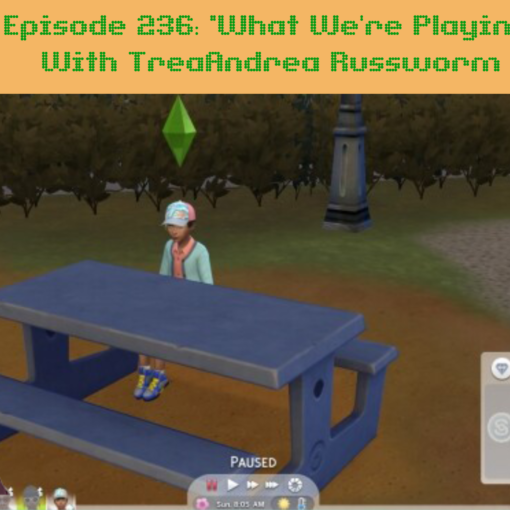Power Hour Reviews are a new weekly NYMG feature in which we spend one intense hour playing newly released games in order to get a sense not only of game mechanics and characterization, but narrative as well. Let us spend our time first, so that you don’t have to waste yours.
Tales of Xillia, a Japanese role-playing game (JRPG) and the thirteenth installment in the Tales franchise created by Namco Tales Studio, seems to follow much of the same successful formula that its predecessors have: cutscenes reminiscent of anime supported by a focus on characters and a quest to save an elaborate and fantastical world. Although the game was originally released close to two years ago in Japan, it was only recently ported in English to North America and is available solely for PS3.
I will put a disclaimer at the start of my review that, as per JRPG fashion, Tales of Xillia is a bit slow in its start up. While that is by no means a bad thing as it begins with a solid exposition of the world and the general frame of the story – introducing it along with a brief introduction to the two major characters – a one hour allotment has allowed me to only reach the beginnings of full-fledged combat and missions. Even still, I will try to be as detailed in what I have experienced so far while playing and what I predict will be forthcoming.
When you first begin your quest you are prompted to decide between two main characters: a medical student named Jude and the god-like entity that acts as a bridge to the spirits, Milla. The character you chose becomes the character that the narrative focuses on and the one you control as the playable character. Furthermore, choosing one character over the other doesn’t eliminate the other character from an active involvement in the story – while they don’t take the lead role, they remain a part of the player’s party and have influence on the story as well as respective character development. I naturally chose Milla, and I do have to say I was attracted to the idea of being able to play primarily as a woman that has her own respective hero’s quest and that is as much complimented by the male hero figure as he is complimented by her. However, although I haven’t quite progressed far enough to be entirely certain, I have heard that fans have labeled Jude’s storyline as the richer tale, so take that as you will.
The actual character design, particularly in the brand of hero Jude is, is something I’ve seen before multiple times in JRPGs and animes. Jude, after getting entangled with Milla, joins the party out of a sense of commitment although he is unused to and a bit intimidated by the threat of combat. While this does fall under a hero trope common in JRPGs and anime, it is a refreshing change to the brunt of action and physicality-centered male heroes in Western games. I found myself pleasantly surprised that Jude’s most emphasized traits, put into concrete and encouraging words when deciding between Jude and Milla, were firstly his kindness and secondly his intellect. He also is the primary healer within the party, a role often assigned to female characters. It’s a nice touch that allows him as a male character to have more depth and takes a step away from a reliance on culturally-based prejudices on what makes a, particularly male, hero, especially coupled with the fact that Milla rescues him just as much if not more so than the reversal.
Milla is a little more complicated of a character to discuss. A god-like deity that appears human but is not quite so, Milla is the master of the four great elemental spirits. She also appears to be a savior-like character and humanity’s connection to the spirits that fuel both the modern and natural world. The first thing that stood out to me was her physical design which unfortunately falls into the frequent category of under-armored and unrealistically exposed with a slightly disproportionate body. With an exposed stomach, short skirt and armor oddly only on her arms, she seems ill-prepared for the combat she has the skill and experience for. While heavy armor doesn’t appear to be used in this series’ character designs, Jude is, at least, better protected than Milla could hope to be. It also seemed a shame that this character who is presumably some form of religious or god figure would have an outfit that didn’t look in the least bit like it belonged to a warrior. But I digress. While kindness and intelligence was emphasized for Jude, Milla’s short introductory paragraph honed in on her mysteriousness and otherworldliness. While I believe that this is a result of the fact that she is a spirit incarnate, it made the plot thus far something of a “strange girl enters normal boy’s life and changes it forever” tale despite the fact that it focuses on Milla. Furthermore, she is continually referred to as the “Lord of Spirits,” a masculinization that I found strange and one that made me get the impression that her gender was an afterthought. Even so, she is an interesting character, one centered around a strength in inner power and duty and I believe the journey to reclaim the spirits she depended so much on will probably result in her exploring her inner strength.
Although the narrative itself revolves around a basic journey to save a world in peril, the complexities of the universe and the focus on character building and partnership prevents it from beginning monotonously. In a world in which humans live with and utilize spirits and the metaphysical realm, Maxwell is the master of spirits, and Milla Maxwell is the spirit incarnate. After sensing the presence of lesser spirits declining, she sets out to investigate, saving Jude from experimentation by a nefarious and suspicious corporation in the process. Wanted by officials after breaking into the lab that is presumably contributing to the unbalance, the two set out to reclaim the four elemental spirits that Milla lost after being attacked by a crazed villain and to right the wrong created by the organization. Although I have only acquired one more partner since teaming up with Jude thus far, the group gains allies that help them through their quest, and well-written dialogue between the characters is rich and at times witty. Along with the regular cutscenes, Tales of Xillia allows the player at their discretion to initiate additional scenes at periodic points while travelling that offer some additional dialogue, some of which is plot relevant and some that just helps to illuminate the characters’ personalities. I found these to be an enjoyable part of the game, adding to the overall narrative experience and allowing me to get a better connection to the characters. It also reveals some of the dynamic between the characters that is realistic and believable.
Character cooperation also comes into play heavily in combat, which relies upon linking with one of your party members to take down enemies as well as defending and healing. That link can be changed at any time during battle, and each partner has a different emphasis or skill that can assist the player. In addition to their special abilities, they can combine with a specific attack from the player character to create a team attack, flank the back of the enemy, and guard the player character from being attacked from behind.
Unlike other RPG battle systems, Tales of Xillia’s is very action oriented, placing the player in charge of running to and from enemies in an open battlefield, dodging, defending and attacking rather than relying on a turn-based system. This creates a certain degree of haste that I found made combat more intensive while still encouraging the player to create and harness strategies, particularly in the form of battle commands the player gives to the AI members in the party. After gaining experience and earning Lilium Orbs, the player can then upgrade character abilities and stats on a grid-like system that reminded me a lot like the Crystarium system used in Final Fantasy XIII.
Although the environment is perhaps not as open-world as it potentially could have been, exploration offers many opportunities to appreciate a rather gorgeous and rich setting. The lighting combined with the character of each area or town not only imbues the game with an aesthetic appeal but adds a sense of legitimacy to the universe of the game.
Overall, while the game does run the risk of dipping into some common JRPG tropes, I believe that the attention to character interaction and the rich universe overcomes the doubts these create. With a fast-paced combat system that is engaging and exciting and a world that is genuinely fun to explore, I would consider at least what parts I have played in the game thus far worth playing and I personally look forward to completing it. Although I haven’t reached any strong consensus on Milla as a successful female character yet, I’m holding out until I complete the game to see how she progresses as a character.





One thought on “Power Hour Review: Tales of Xillia (PS3)”
I’ve started playing the last Tales game and have been enjoying it because of the great character interactions, it’s nice to here they’ve kept that up. Going to be awhile before I can move on to this one, too many JRPG’s to play right now, but I’m looking forward to playing as Milla. Definitely let us know how her character turns out. ^-^